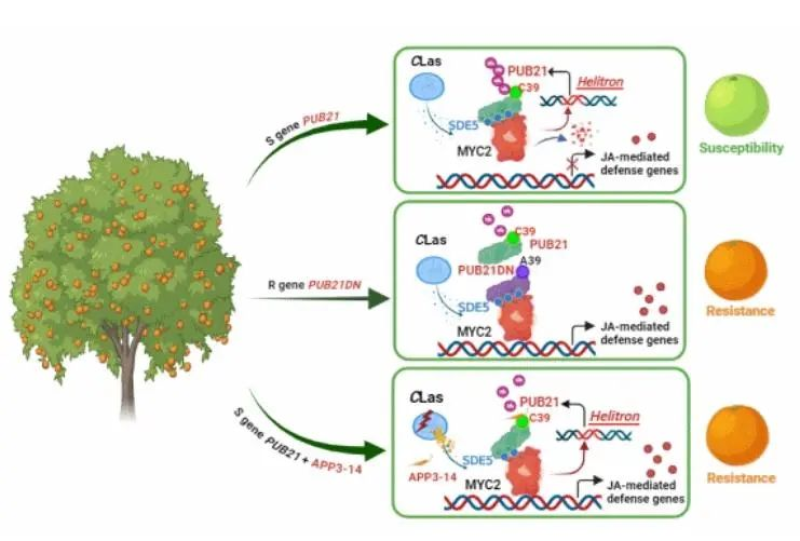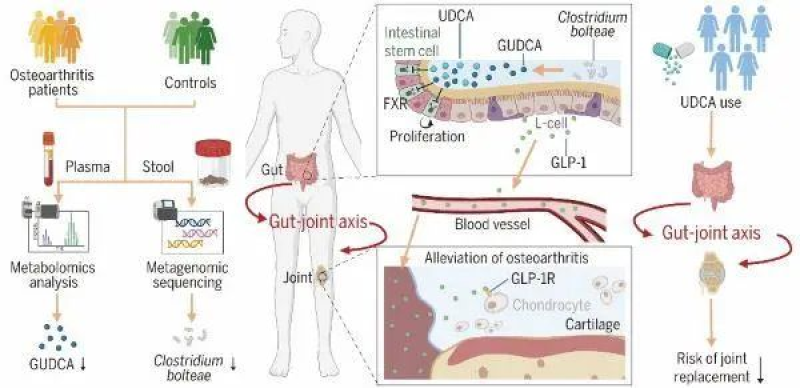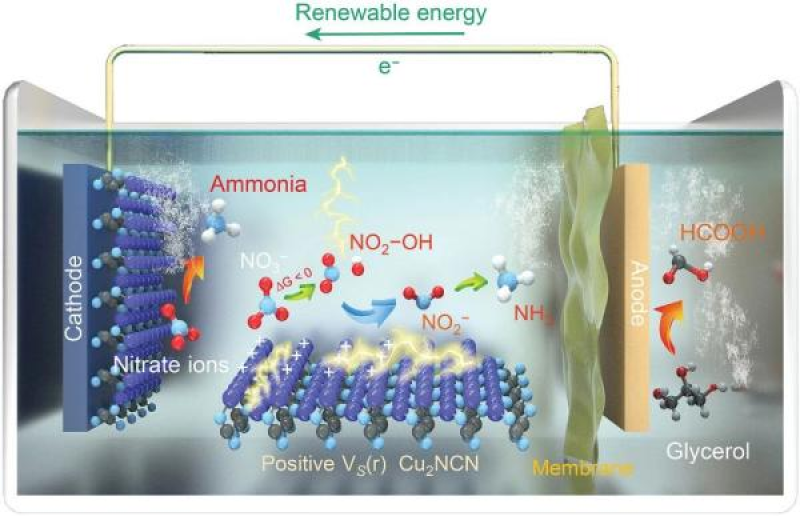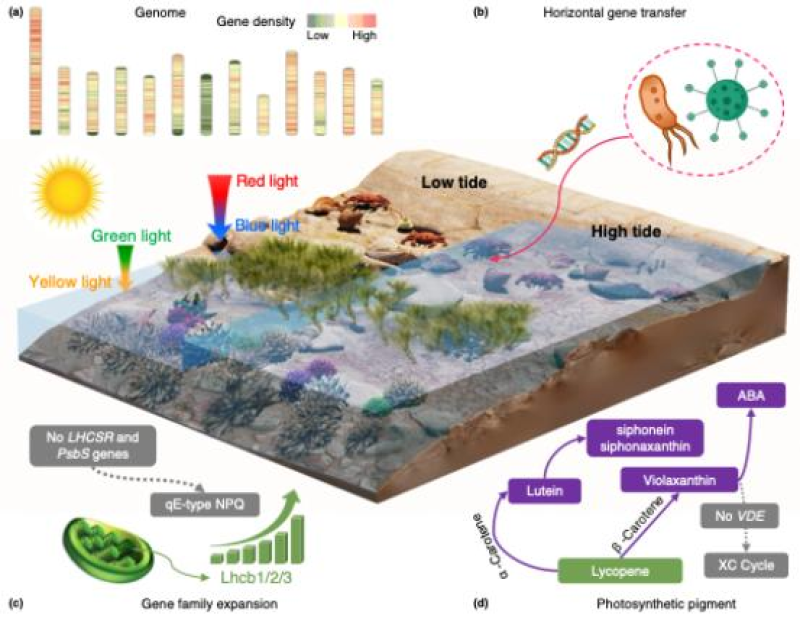Weekly Advanced Technologies〔74〕

Weekly Advanced Technologies〔74〕| Scientists Achieve Major Milestone in Heat-Resistant Magnesium Batteries;Citrus 'Cancer' Cure: Small Peptide Drugs Show 80% Efficacy Against Huanglongbing
Magnesium-metal batteries are regarded as promising candidates for high-temperature-resistant power sources owing to their inherent stability. However, challenges such as electrolyte degradation and interfacial reactions under elevated temperatures remain critical barriers. Recent advancements have substantially enhanced their high-temperature performance and safety through innovations in polymer-based electrolytes and engineered magnesium-conducting interfacial layers, accelerating progress toward practical applications.
Recent research led by Dr. YE Jian’s team at the Institute of Microbiology, Chinese Academy of Sciences, has uncovered the key molecular mechanisms underlying citrus resistance to Huanglongbing (HLB). Their groundbreaking study identified critical amino acid variants and, leveraging artificial intelligence, screened highly effective small peptides for disease prevention and control. These findings offer promising new solutions to safeguard the global citrus industry.
Based on the weekly diary of technology provided by the daily list of the NCSTI online service platform, we launch the column "Weekly Advanced Technologies" at the hotlist of sci-tech innovation. Today, let's check out No.74.
1. Advanced Materials丨Scientists Achieve Major Milestone in Heat-Resistant Magnesium Batteries

Stable cycling of high-temperature magnesium-metal batteries enabled by in situ cross-linked polymer electrolytes and their derived anode interfaces
High-temperature batteries, as an important branch of specialty batteries, magnesium-metal batteries are regarded as an ideal choice for the development of high-temperature-resistant power sources due to their chemical stability, high melting point, and difficulty in growing dendrites. However, the stability and interfacial reaction of the electrolyte become a key challenge in high temperature environments. For this reason, the design of high-temperature-resistant electrolytes and the in-situ construction of a magnesium-conducting solid electrolyte interfacial layer on the magnesium anode surface are key to promoting the practical application of high-temperature magnesium-metal batteries.
Researchers from the Qingdao Institute of Bioenergy and Bioprocess Technology, Chinese Academy of Sciences, have made significant progress in the field of high-temperature magnesium-metal battery polymer electrolytes. Building upon foundational research on novel magnesium battery polymer electrolytes and magnesium metal anode interface engineering, the team modified polyepichlorohydrin (PECH)—a polymer known for its high thermal stability and compatibility with magnesium anodes—using a dual-functional small-molecule quaternization crosslinker strategy. This approach enabled in-situ crosslinking of PECH while introducing quaternary ammonium functional groups, enhancing electrolyte performance.
The study reveals that the in-situ generated quaternary ammonium functional groups exhibit a low lowest unoccupied molecular orbital (LUMO) energy level, enabling their preferential decomposition on the magnesium metal anode surface to form an organic-inorganic composite solid electrolyte interphase (SEI) layer rich in Mg₃N₂.
Using this electrolyte system, the assembled Mo₆S₈//Mg battery demonstrated exceptional cycling stability at high temperatures (150°C), maintaining a capacity retention rate exceeding 80% after over 200 cycles. Furthermore, the battery exhibited outstanding safety performance under abusive conditions. This breakthrough provides new insights into molecular design of electrolytes and interface optimization for high-temperature magnesium-metal batteries, paving the way for accelerated development in this field.
2. Science丨Citrus 'Cancer' Cure: Small Peptide Drugs Show 80% Efficacy Against Huanglongbing

Regulatory mechanisms of citrus Huanglongbing resistance targeting protein degradation
Citrus Huanglongbing (HLB) is often referred to as the "cancer of citrus." A research team led by YE Jian from the Institute of Microbiology, Chinese Academy of Sciences, has deciphered the core molecular mechanism of citrus resistance to HLB and utilized artificial intelligence (AI) technology to screen for small peptides that can effectively control the disease. This study had solved a long-standing scientific challenge in global agriculture—the lack of HLB-resistant genes in citrus—and provides a new sustainable solution for the citrus industry in the world.
In this study, we identified the jasmonate signaling pathway’s core transcription factor MYC2 and its reciprocal E3 ubiquitin ligase PUB21 as a key disease resistance regulatory hub. Through mining Chinese Citrus and Brassicaceae germplasm resources, we discovered that a dominant-negative paralog of PUB21 (PUB21DN), present in citrus ‘distant relatives’ such as pepper and curry, enhances MYC2 protein stability via a critical amino acid variation (position 39). This mechanism activates multiple disease-resistant proteins and secondary metabolite synthesis pathways, ultimately conferring high resistance—and even immunity—to HLB in citrus.
Building upon this natural resistance mechanism, the research team developed the world's first drug screening system targeting stabilized MYC2 protein. By incorporating deep learning algorithms, they efficiently identified multiple therapeutic small peptides (including APP3-14) from a million-molecule library. Cross-latitude, multi-center field trials conducted in Guangxi and Jiangxi provinces demonstrated these peptides can effectively: inhibit Huanglongbing pathogen colonization;disrupt disease transmission cycles, achieving 80% prevention efficacy within a single growing season.
This study has provided ready-to-use green biopesticide candidates, identifies disease-resistant genes as key targets for future gene-edited breeding (potentially shortening citrus disease-resistance breeding cycles), and established a cross-species resistance mechanism paradigm to inspire disease-control strategies in other crops. A full-chain R&D system has been developed, integrating: resistance gene discovery, molecular mechanism decoding, and AI-aided drug design.
3. Physical Review Letters丨Unveiling Proton Spin Complexity Through Intrinsic Quark Motion

Schematic of the variation of quark polarizability in protons with transverse momentum for different longitudinal momentum fractions
The startling discovery in the 1980s that quarks barely account for the proton's spin - dubbed the "proton spin crisis" - fundamentally reshaped the landscape of particle physics research on nucleon structure. The research team of SUN Peng and ZHAO Yuxiang from the Institute of Modern Physics, Chinese Academy of Sciences, in collaboration with MA Boqiang from Peking University and LIU Tianbo from Shandong University, has made significant progress in the study of proton spin structure.
Leveraging the theoretical framework of transverse momentum-dependent factorization in quantum chromodynamics, the team conducted a comprehensive analysis of globally available experimental data on semi-inclusive deep inelastic scattering. Their work enabled the extraction of the transverse momentum-dependent quark helicity distribution functions within protons. The results reveal statistically significant non-zero signals for the helicity distributions of valence up- and down-quarks, which align with predictions from covariant parton model calculations. In contrast, the distributions for sea quarks and gluons exhibit substantially larger uncertainties, reflecting current experimental limitations.
In the valence quark-dominated region at medium longitudinal momentum fraction (x), the quark polarization is observed to decrease with rising transverse momentum (pT). This trend provides direct evidence that relativistic kinematic effects—primarily the Melosh-Wigner rotation—are the dominant mechanism behind the apparent proton spin "loss."
These findings have not only advanced our understanding of the proton's three-dimensional spin structure, but have also provided critical theoretical support for next-generation high-precision experimental measurements. Importantly, they have highlighted the potential of China's Polarized Electron-Ion Collider to significantly enhance the precision of proton spin structure measurements in the sea quark region.
4. Science丨The Gut-Joint Axis: A Newly Identified Pathogenic Pathway in Osteoarthritis Pathogenesis

gut microbiota–GUDCA–intestinal FXR–GLP-1–joint pathway offers a potential strategy for osteoarthritis treatment
The research team led by XIE Cen from the Shanghai Institute of Materia Medica, Chinese Academy of Sciences, in collaboration with scientists from Xiangya Hospital of Central South University, has made significant progress in elucidating the pathogenesis of osteoarthritis and advancing clinical translation research.
At present, the pathogenesis of osteoarthritis remains incompletely understood, and effective disease-modifying drugs are lacking. This study, based on the natural population cohort "Xiangya Osteoarthritis Study" established by Xiangya Hospital, revealed that serum levels of glycoursodeoxycholic acid (GUDCA) show a significant negative correlation with both OA incidence and disease severity. These findings were further validated in an independent cohort - the "Xiangya Walking Study".
Animal experiments have demonstrated that GUDCA delayed osteoarthritis progression in mice by selectively inhibiting the intestinal farnesoid X receptor (FXR). Further studies have revealed that FXR knockdown in intestinal stem cells promoted their proliferation and differentiation, increasing L-cell numbers and enhancing glucagon-like peptide-1 (GLP-1) production, which has elevated serum GLP-1 levels. Notably, intra-articular injection of GLP-1 receptor inhibitors have abolished GUDCA’s therapeutic effects in osteoarthritic mice, whereas GLP-1 receptor agonists have delayed disease progression.
Furthermore, the study has revealed that osteoarthritis (OA) patients have exhibited reduced relative abundance of Clostridium bolteae (C. bolteae) in their gut microbiota, with this bacterium's abundance having shown a positive correlation with serum GUDCA levels. Remarkably, C. bolteae supplementation has been found to elevate levels of ursodeoxycholic acid (UDCA)—the metabolic precursor of GUDCA—and subsequently attenuate OA progression. Real-world evidence has demonstrated that both oral UDCA administration and GLP-1 receptor agonist usage have been associated with decreased risks of disease progression in OA patients. These findings collectively have suggested the existence of a "gut-joint axis" regulatory mechanism, providing novel perspectives for developing gut-targeted therapeutic strategies against osteoarthritis.
5. JACS丨Renewable-Powered Electrocatalyst for Efficient Ammonia Production: A Collaboration Between Chinese and Swedish Scientists

Coupling strategy: Schematic diagram of a paired electrochemical electrolytic refining system for the simultaneous production of ammonia and formate
Metal cyanamide compounds represent a class of organic-inorganic hybrid materials that demonstrate distinct electrochemical characteristics compared to conventional oxide-based materials. This unique behavior stems from their characteristic [NCN]²⁻ anionic structure. Unlike O²⁻ anions, the linear [NCN]²⁻ configuration enhances structural openness in the crystal lattice while simultaneously modulating electronic delocalization and metal coordination environments. These structural and electronic features create promising opportunities for developing novel, high-performance catalytic systems.
A research team from the Shanghai Institute of Ceramics, Chinese Academy of Sciences, in collaboration with the Royal Institute of Technology, Sweden, and Dalian University of Technology, has made significant progress in applying metal cyanamide compounds to electrocatalytic NOx reduction for ammonia synthesis.
The team initially discovered the superior performance of Cu₂NCN in electrocatalytic CO₂ reduction to methanol and subsequently extended its application to nitrate reduction (NO₃RR) for ammonia production. Recently, they developed a novel copper-zinc cyanamide solid solution (Cu₀.₈Zn₀.₂NCN) as an efficient electrocatalyst for nitrite reduction (NO₂RR) to ammonia.
Recent studies demonstrate that renewable electricity-driven electrocatalytic NOx reduction (NOxRR) enables sustainable "green ammonia" synthesis under mild conditions, simultaneously facilitating wastewater denitrification and nitrogen cycle balance. Unlike the strong triple bond in N₂, NOx species (NO₃⁻/NO₂⁻) exhibit lower N=O bond dissociation energies and favorable aqueous solubility, making them more amenable to efficient electrocatalytic conversion to ammonia (NO₃RR/NO₂RR).
In Cu₂NCN, the polarized [N–C≡N]⁻ motif enhances surface electrostatic potential, significantly improving NO₃⁻ adsorption and subsequent ammonia generation. Experimental results confirm that this material delivers high ammonia yield and excellent long-term stability in neutral, low-concentration nitrate electrolytes.
Electrocatalytic NOxRR powered by renewable energy offers a dual benefit: green ammonia synthesis under mild conditions and wastewater denitrification. Unlike inert N₂, NO₃⁻/NO₂⁻ feature weaker N=O bonds and high solubility, enabling efficient NO₃RR/NO₂RR-to-NH₃ conversion. The polarized [N–C≡N]⁻ in Cu₂NCN boosts NO₃⁻ adsorption, yielding high NH₃ production rates with robust stability in dilute nitrate solutions.
6. New Phytologist丨High-quality genome of Bryopsis corticulans reveals genomic insights into its intertidal adaptability

Bryopsis corticulans is a large green macroalga widely distributed in the intertidal zones of northern temperate oceans. To survive, B. corticulans must adapt to dynamic environmental factors such as tidal fluctuations, temperature variations, and UV radiation. During high tide, its photosynthetic proteins efficiently capture light energy—primarily from blue-green and green wavelengths under low-light conditions—to sustain growth, while at low tide, it activates photoprotective mechanisms to mitigate high-light stress.
Over the past two decades, researchers at the Institute of Botany, Chinese Academy of Sciences, have systematically studied B. corticulans’pigment composition and the structure-function relationships of its photosynthetic membrane proteins. However, a comprehensive understanding of the genomic and genetic basis underlying its adaptation to intertidal environments has remained elusive. Recently, scientists from the institute decoded the genome of B. corticulans, shedding light on the genomic mechanisms behind its resilience in these challenging habitats.
Due to complex habitats and microbial contamination in algal sequencing, researchers developed a contamination-filtering pipeline to assemble a high-quality Bryopsis corticulans genome. Comparative genomics/transcriptomics showed expansions in stress-related gene families (Lhcb1/2/3, MAPK, BPL-1/Bryohealin, mTERF) and adaptive genes via horizontal transfer. Bryopsis lacks LHCSR, PsbS, and VDE, preventing xanthophyll cycle-based photoprotection. Unique siphonein, siphonaxanthin, and ABA biosynthesis genes may explain its specialized light adaptation.
The above studies have provided a new strategy for obtaining the high-quality genome of Pseudorhabditis elegans, as well as enabling efficient decontamination and assembly of algal genomes, thereby expanding our understanding of the genomic basis of Pseudorhabditis elegans’ adaptation to the intertidal environment.